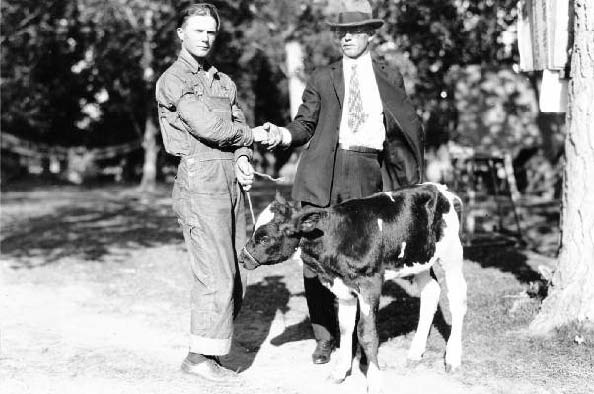edible traditions
FAMOUS FALLON BIRDS
Raising turkeys was big business in Northern Nevada.
WRITTEN BY SHARON HONIG-BEAR
PHOTO FROM CHURCHILL COUNTY MUSEUM & ARCHIVES
The spotlight was on Nevada in the 1930s. Nationwide, the state was recognized for its easy divorces, wide-open gambling, and friendly tax structure. A little-known piece of agricultural history also put the Silver State on the map: Nevada turkeys, especially those raised in Fallon, were being shipped around the country, finding their way to some of America’s most prestigious Thanksgiving tables.
One of the leading producers — and an excellent marketer of her Atlasta brand — was Mrs. E. W. Blair, more commonly called Minnie. She started on a small scale in the late 1930s, about three-quarters of a mile south of Fallon. She raised her own wheat and corn, supplying feed for the flock. By 1941, Minnie was described as “Nevada’s outstanding turkey producer” in the Nevada Farm Journal.
Pioneering woman
Born in Folsom, Calif., in 1886, Blair inherited a strong pioneer spirit. She lived in both Goldfield and Tonopah with her husband, Ernest Blair, a messenger for Wells Fargo. In 1924, the Blairs moved to Fallon, when Ernest transferred to George Wingfield’s Churchill County Bank. Minnie bought a ranch on the edge of town from Wingfield, attracted to its water rights and the possibility of having a garden. There she started the turkey business that eventually would grow to an operation shipping to 38 states, Canada, and Mexico. She called the ranch Atlasta, and in 1941, she adopted that name for her trademark birds.
Famous tables
Minnie received many endorsements for her birds. An Atlasta bird reportedly made its way to Washington, D.C., where President Franklin D. Roosevelt enjoyed it at the White House Thanksgiving dinner.
A letter from Mrs. Oscar Hammerstein II, wife of the noted Broadway songwriter, read, “Once again a letter to say how much we loved the turkey. It weighed 26 pounds and was the talk of the town.”
Nevada birds were creating “enchanted evenings” throughout the nation. Reno restaurants frequently mentioned “roast Fallon turkey” in their ads for Thanksgiving dinner.
High quality
The Fallon birds became so famous that lesser turkeys often were mislabeled when sold. In order to maintain standards, the turkey farmers in the area formed the Churchill County Poultrymen Inc.
“Fortunately, progressive growers have submitted to rigid grading rules and have labeled their product with a brand name under which inferior birds cannot be marketed,” declared an editorial in the Nevada State Journal in 1931.
The prime turkeys carried a Diamond N trademark, and by 1934 were well established in markets in Los Angeles and San Francisco.
In 1947, two important events occurred in the Blairs’ lives. They left the turkey business. But Minnie couldn’t leave the food industry completely. She opened a Spudnuts doughnut shop at the ranch and, along with her daughter Helen, operated another successful business into the 1950s.
For a time, the turkey industry in the Fallon area continued. The Blairs’ ranch and equipment was used by another major producer, W. D. Howard. Experimentation with different breeds went on for years. After the idea of selling “half a bird” didn’t prove successful, breeders looked to produce smaller-sized birds.
The ritual of turkey at Thanksgiving joins another enduring tradition in the West: the early entrepreneurial woman, independent rancher, and civic leader. Fallon’s Minnie Blair embodied all of these qualities.
Sharon Honig-Bear was a longtime restaurant writer for the Reno Gazette-Journal. Currently, she is a tour leader with Historic Reno Preservation Society and founder of the annual Reno Harvest of Homes Tour.


